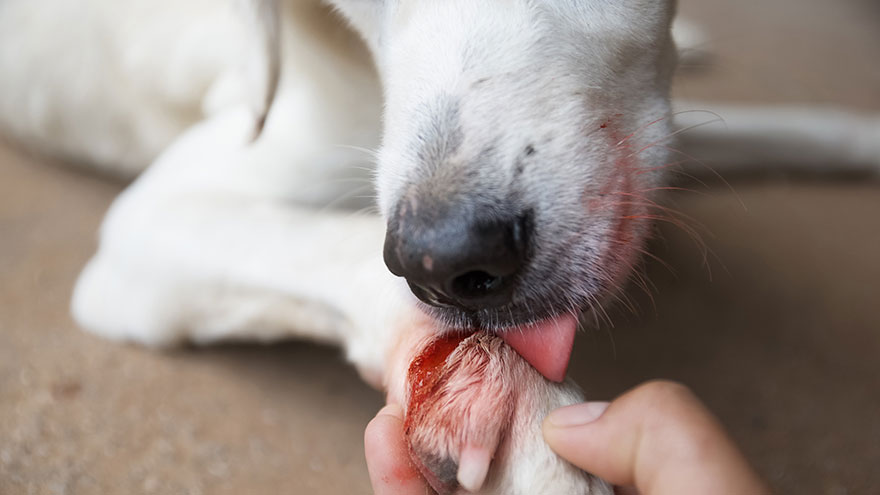How to Prevent a Dog From Licking a Wound
Since you can’t tell your dog to stop licking a wound, the best thing you can do is to prevent him from reaching it. Special collars, cones and boots — all available at veterinarian offices and online — help protect wounds. You might need to try different alternatives before you find what works best for your dog.

Traditional E-Collars
Traditional E-collars — also known as Elizabethan collars — are plastic cones that are secured around your dog’s neck. They are the most common option provided by veterinarians after surgery or an injury. These cones prevent the dog from reaching a wound or a healing surgical incision and keep him from chewing at a bandage. E-collars can be uncomfortable and heavy, and some dogs refuse to move much, eat or drink when wearing one. They can also cause damage to your home, as dogs tend to bump into things when walking.
Better Cone Alternatives
While the traditional collar is made of white plastic, some E-collars are transparent. These collars are lighter and allow your dog to get a better view of his surroundings so he’s less likely to bump into things. A thick, tight collar is an alternative to an E-collar. It hugs your dog’s neck and looks similar to a neck brace. It stops him from bending his neck to reach the wound. These are best for breeds with longer necks, but some dogs might object to the lack of mobility they cause.
RELATED :: Everything About E-Collar
Soft and Inflatable Collars
Instead of an E-collar, some owners use softer collars such as a doughnut-shaped inflatable version or a flatter disk option. These collars don’t cover the face and don’t look like a cone. Instead, they prevent your dog from reaching a wound by limiting neck movement. Both products allow mobility of the head and neck from side to side but don’t allow your dog to bend his neck down to reach for his belly, toes or other areas where there is an incision or bandage.
Other Products
If the injury is on a foot, try covering the foot instead. Make your own covering using an old sock or a sleeve from an old shirt or sweater. Tape around the covering to secure the cloth over the paw, making sure the tap is set over the material rather than your dog’s hair. Or, try special booties stretch over the dog’s foot and leg, and oversized winter boots fit over the standard dressing.
You Might Also Like :: Acute Kidney Failure Symptoms in Dogs

